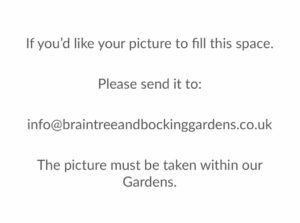Apple, Crab
The Crab Apple Tree, one of the ancestors of the cultivated apple, is a broadleaved deciduous tree, that can grow to a height of 12 m, and may live for 100 years.
They have an irregular rounded shape and a wide spreading canopy. With greyish brown flecked bark, trees can become quite gnarled and twisted, especially when exposed, and the twigs often develop spines.
This ‘crabbed’ appearance may have influenced its common name, ‘crab apple’. points following a single enter.

Photo supplied by: Alan Payne
Common Name:
Crab Apple
Scentific Name:
Malus sylvestris
Tree No.:
55a
Location:
…

The brown and pointed leaf buds form on short stalks and have downy hair on their tips. These are followed by glossy, oval leaves which grow to a length of 6cm and have rounded teeth.

Credit: This could be your image
In spring, the sweetly scented blossom is pollinated by bees and other insects. The blossom develops into small, yellow-green apple-like fruits around 2–3cm across.

Credit: This could be your image
Sometimes the fruits are flushed with red or white spots when ripe. Birds and mammals eat the apples and disperse the seeds.

Credit: This could be your image
The crab apple is native to the UK, and is found primarily in the temperate zone of the Northern Hemisphere, it thrives best in heavy, moist, well-drained soil and areas of scrub.
The leaves are food for the caterpillars of many moths. The flowers provide an important source of pollen and nectar for insects, particularly bees. The fruit is eaten by birds, such as blackbirds, thrushes and crows, and small mammals, such as rodents, foxes and badgers.
The trees are often planted in orchards as their long flowering period makes them excellent pollination partners for cultivated apples. The fruit can be used to make crab apple jelly and as a natural source of pectin for setting jams.
The wood was made into tool handles, woodenware, and fuel. The wood is ideal for woodcarvers. The bark was made into a yellow dye.
Optional Content.
Tree Listings
Lawson Cypress
Cypress, Lawson The Lawson Cypress, is an evergreen conifer, that can grow to a height of 45m high, and may live more than 500 years. A tall, narrowly conical tree, with feathery foliage. The bark is cracked into vertical plates, and the twigs are a dark...
Wild Cherry
Cherry, Wild The Wild Cherry, one of the prettiest native trees, is a broadleaved deciduous tree, that can grow to a height of 30m, and may live for 60 years. The shiny bark is a deep reddish-brown with prominent cream-coloured horizontal lines called lenticels. ...
Western Red Cedar
Cedar, Western Rad The Western Red Cedar, is an giant evergreen conifer, that can grow to a height of 65m, and may live for 1,000's of years, with several examples in existance that over 1,500 years old. It is tall and conical in shape, with a broad trunk and dense...
Japanese Red Cedar
Cedar, Japanese Red The Japanese Red Cedar, is an evergreen conifer, that can grow to a height of 65m, and may live for 350 years. The bark is grey and stringy and tears off in long strips on mature trees..Photo supplied by:Common Name:Japanese Red Cedar Scentific...
Deodar Cedar
Cedar, Deodar The Deodar Cedar, is a fine textured evergreen conifer, that can grow to a height of 50m, and may live for 1,000 years.These two Deodars were probably planted well before the Gardens opened in 1888.Photo supplied by:Common Name:Deodar Cedar Scentific...
Blue Atlas Cedar
Cedar, Blue Atlas The Blue Atlas Cedar, is a showy evergreen conifer, that can grow to a height of 35m, and may live for 150 years. The trees are pyramidical while young but with age become flat topped with horizontal branches. The bark is blackish-brown with closely...
Silver Birch
Birch, Silver The Silver birch, is a striking broadleaved deciduous tree, that can grow to a height of 30m, and may live for 150 years, although 60 to 90 years may be more typical. Forming a light canopy with elegant drooping branches. The silver-white bark sheds...
Cut Leaf Beech
Beech, Cut Leaf Content to follow. Photo supplied by: Alan PayneCommon Name:Cut Leaf Beech Scentific Name:Fagus sylvatica heterophylla asplenifoliar Tree No:186 Location:D7Content to follow. Credit: This could be your image Content to follow....
Copper Beech
Beech, Copper The Copper beech, also known as purple beech, is a broadleaved deciduous tree, that can grow to a height of more than 40m, and may live for 300 years, although 200 years may be more typical. The bark is smooth, thin and grey, often with slight horizontal...
Common Beech
Beech, Common The Common Beech, is a charismatic and beautiful broadleaved deciduous tree, that can grow to a height of more than 40m, and may live for 350 years, although 250 years may be more typical. The bark is smooth, thin and grey, often with slight horizontal...
Common Ash
Ash, Common The Common Ash, is a broadleaved deciduous tree, that can grow to a height of 35m, and may live for 350 years, although 200 years may be more typical.Tall and graceful, they often grow together, forming a domed canopy. The bark is pale grey-brown and...
Auto Draft
Page Title Overview text Diffent points following a single enter.Photo supplied by:Common Name:Xxx Scentific Name:Xxx Tree No:00 Location:X0Content to follow. Credit: This could be your image Content to follow. Credit: This could be your image...
Braintree & Bocking Public Gardens,
43 Bocking End,
Braintree,
CM7 9AE.
Open 9:00 to 4:00pm – January, February.
Open 9:00 to 6:00pm – March.
Open 9:00 to 7:00pm – April.
Open 9:00 to 8:00pm – May, June, July, August.
Open 9:00 to 7:00pm – September.
Open 9:00 to 6:00pm – October.
Open 9:00 to 4:00pm – November December.
Note – The gates are locked at dusk.
Dusk is subject to seasonal variation, so closing times may not be exactly to the schedule, at the transitions.
No dogs allowed in the gardens.
No alcohol to be consumed in the gardens.
No riding of cycles or scooters in the gardens.
General Enquiries
Phone: 01376 773066
Email: info@braintreeandbockinggardens.co.uk
Tennis Enquiries
Phone: 01376 773070
Email: tennis@braintreeandbockinggardens.co.uk
© Braintree & Bocking Public Gardens Trust 2017-2021. All Rights Reserved.
Registered Charity Number 212989
Get in touch


Braintree and Bocking Public Gardens
We provide, maintain and preserve these unique and beautiful gardens as a community green space.